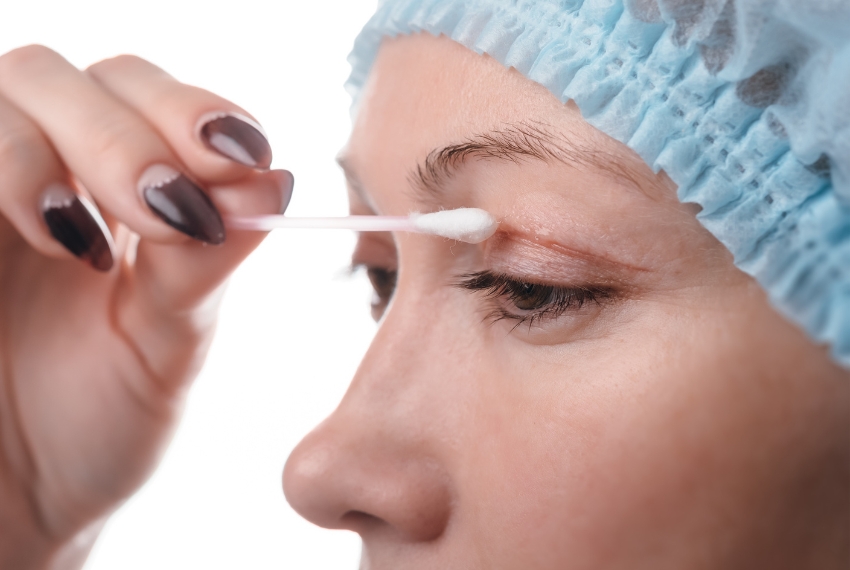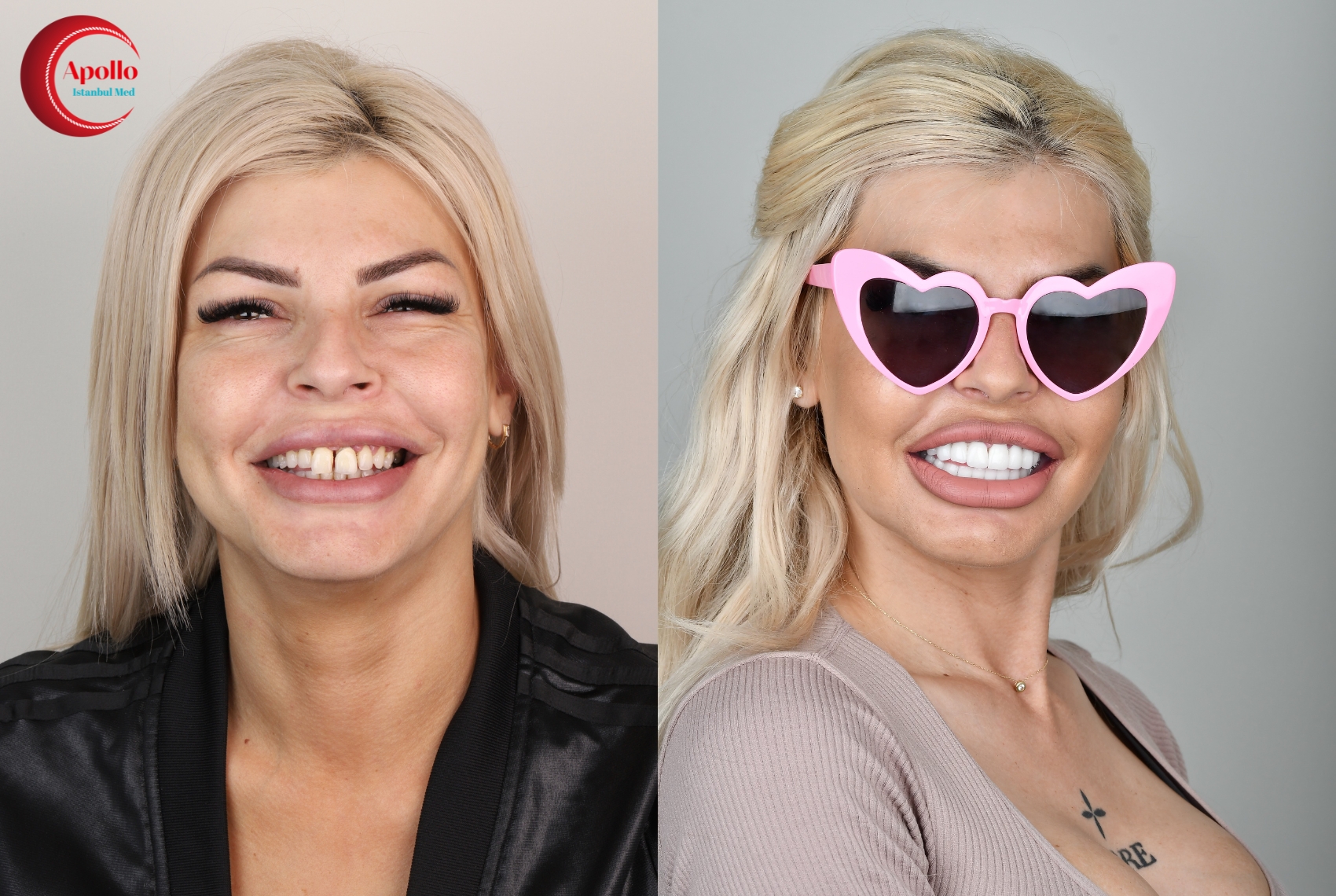
Blepharoplasty
Blepharoplasty is a surgical procedure that involves the removal of excess skin, fat, or muscles to correct sagging eyelids. As people age, the eyelids tend to stretch, while the muscles that hold them also weaken. Consequently, excess fat may accumulate above and below the eyelids, leading to drooping eyebrows, sagging upper eyelids, and bags under the eyes.
Additionally, sagging skin around the eyes can reduce side vision or peripheral vision, besides giving you an older appearance. This mainly affects the upper and outer region of the visual field. These vision problems can be reduced or eliminated with blepharoplasty, which makes your eyes look younger and more alert.
Why Blepharoplasty is Done
If sagging eyelids obstruct your eyes from fully opening or drag down over the lower lids, you may consider blepharoplasty. It is possible to improve your vision by removing excess tissue from the upper eyelids. Blepharoplasty of the upper and lower eyelids can give your eyes a youthful and alert appearance.
If you have the following eye conditions, blepharoplasty may be a good option for you:
• Upper eyelids that are baggy or drooping
• Excess skin on the upper eyelid that interferes with side or peripheral vision
• Excess skin on the lower eyelids
• Bags under the eyes
Blepharoplasty can sometimes be performed along with other procedures, including facelift, brow lift, or even skin resurfacing.
How to Prepare for Blepharoplasty
Before scheduling blepharoplasty surgery, you will first meet with the plastic surgeon and an ophthalmologist (eye specialist) or a plastic surgeon specializing in eye procedures (oculoplastic surgeon). Then you and the doctor will discuss in detail the following:
• Your medical condition: The specialist will inquire about your past surgeries as well as any past or present medical conditions. These may include glaucoma, dry eyes, allergies, thyroid problems, circulatory issues, or diabetes. He or she will also ask about the prescriptions, herbal supplements, vitamins, tobacco, alcohol, and drugs you use.
• Your treatment expectations: An open discussion about your surgical goals and motivations can help determine a successful outcome. Additionally, you will need to undergo the following procedures before undergoing eyelid surgery:
• Overall physical examination: The plastic surgeon will perform a physical examination on you. This may include measuring segments of the eyelids and checking tear ducts.
• Vision test: If necessary, the surgeon will also assess your eyes and examine your vision as well as peripheral vision.
• Eyelid photography: The surgeon will take pictures of your eyes from various angles. These photos are crucial for surgical planning and evaluating both the immediate and long-term effects.
In some cases, the plastic surgeon will ask you to do the following while preparing for blepharoplasty surgery:
• Stop using medications that may increase the risk of bleeding. These medications include ibuprofen, aspirin, warfarin, naproxen sodium, and other medications and herbal supplements.
• Stop smoking at least a few weeks before undergoing the procedure. This is because smoking can delay the recovery process after surgery.
• Arrange for someone to drive you home after the procedure.
What to expect during Blepharoplasty
Blepharoplasty is usually performed as an outpatient procedure. This means that you will be able to return home shortly after the surgery. Only individual cases may require general anesthesia. Typically, the plastic surgeon will inject a local anesthetic into the eyelids.
The upper eyelids are the first to be treated during the procedure. The surgeon will make a small incision through which they will remove excess skin, fat, and muscle from the area. Before closing the incision, some of the tissues may be repositioned around the eye. In addition to skin tightening, muscle tightening is performed with a laser during the surgery to prevent it from relaxing again. This intervention is known as correction of upper eyelid ptosis. This ensures a permanent, long-lasting lifting effect on the drooping upper eyelids. However, many clinics and surgeons do not include it in upper blepharoplasty and require separate payment for it.
Lower eyelid blepharoplasty is the next step. It often involves the removal of excess fat contributing to the bags under the eyes, including a small piece of skin. The incision can be made from the inside or outside of the eyelid, below the lower lashes. Also, the lower eyelid can be tightened or attached to the bony skeleton for some individuals.
Types of anesthesia used during Blepharoplasty:
Depending on the nature of the treatment, your plastic surgeon will perform blepharoplasty under general anesthesia or regional anesthesia.
• General anesthesia: This is a combination of intravenous (IV) medications and some gases to put the patient into a deep sleep. This means you will be completely unaware of the treatment and will not experience any discomfort.
• Regional anesthesia: Nerve block is another name for regional anesthesia. To numb a wide area of the body, anesthetic is injected around the nerves. The surgeon will inject the anesthetic into the skin and tissues around the area of the procedure to numb a smaller area (local anesthesia). To make you calm and more comfortable during the procedure, you will likely receive sedation along with the regional anesthetic.
Recovery from Blepharoplasty
Compared to other forms of surgical procedures, recovery from blepharoplasty is relatively quick. You will be sent to a recovery room immediately after the treatment. Here, the medical team will monitor you for side effects and send you home the same day, unless there are any complications.
It is crucial to rest for a few days after eyelid surgery. Swelling and discomfort are possible side effects. The doctor may prescribe ibuprofen to help alleviate these symptoms. In most cases, these symptoms may take one or two weeks to completely disappear. Therefore, the doctor will recommend using ice packs over the next few days.
After eyelid surgery, wearing contact lenses is restricted for two weeks or even longer. Therefore, make sure you have a backup option in place, such as prescription glasses. Short-term side effects of blepharoplasty include blurred vision and sensitivity to light. If these symptoms persist for more than one or two days, contact your doctor.
Covering the eyes throughout the entire recovery phase is not necessary. However, gauze may be prescribed to protect the area while you heal at home. Also, make sure to carefully wash the area and keep it clean at all times.
After a few days, you will return to the blepharoplasty surgeon for a follow-up examination and, if necessary, for the removal of any stitches.
Results of Blepharoplasty
Most patients are usually satisfied with the results of their blepharoplasty, which include a calmer and more youthful appearance, as well as increased self-confidence. The effects of the surgery can last a lifetime for some people. Others may experience recurrence of sagging eyelids. This also greatly depends on the surgeon's skill level and the set of techniques applied.
Bruising and swelling typically subside within about 10 to 14 days. At this point, you will be more comfortable and able to go out in public again. However, you should be careful not to overexpose your delicate eyelid skin to the sun. Additionally, surgical incisions may leave scars that take months to fade away.
Risks of Blepharoplasty
Bleeding, bruising, and infection are all risks associated with the surgery. Hematomas are a rare but dangerous complication if they occur. Other possible risks and complications include:
• Damage from excessive sun exposure
• Blurred vision
• Dry eyes
• Itching in the area around the eyes
• Inability to close the eyes
• Muscle damage
• Scarring
It is crucial to discuss these risks with your plastic surgeon beforehand. Additionally, inform your surgeon if you have ever had any previous issues with any form of surgery.
Effectiveness of Blepharoplasty
Blepharoplasty is sometimes performed alongside various related procedures to enhance the outcome. Some people with drooping brows may benefit from a brow lift. Others may opt for a full facelift to address multiple cosmetic concerns at once.
You may want to ask your surgeon if there are other procedures that could help you get the most out of your blepharoplasty. Eyelid surgery ideally is a one-time process. Therefore, if the results are unsatisfactory or if your eyelids fail to heal properly the first time around, you may need additional procedures.
Long-Term Perspective after Blepharoplasty
Swelling from the surgery will gradually subside over time. Most people believe that blepharoplasty significantly improves their appearance, especially for those with relatively loose upper eyelid skin or large bags under the eyes. Final results will appear after a few weeks, but incisions may take up to a year to fully heal.
Blepharoplasty can be expected to address certain eye issues permanently. However, you will still be affected by the consequences of aging.
Conclusion
Blepharoplasty is a surgical technique that improves hooded upper eyelids and eliminates sagging in the lower eyelids. However, upper blepharoplasty is not the same as correcting ptosis of the upper eyelid, which lifts droopy upper eyelids.
Blepharoplasty involves removing excess skin, muscles, and underlying fat tissue. However, tissues may sometimes be repositioned rather than eliminated. Blepharoplasty is essentially a cosmetic treatment. It can also help people whose drooping upper eyelids impair their vision, as recommended by an ophthalmologist or oculoplastic surgeon.







